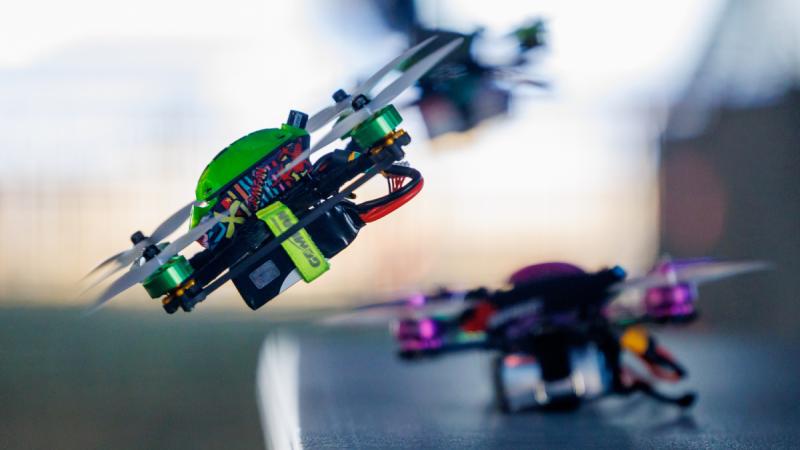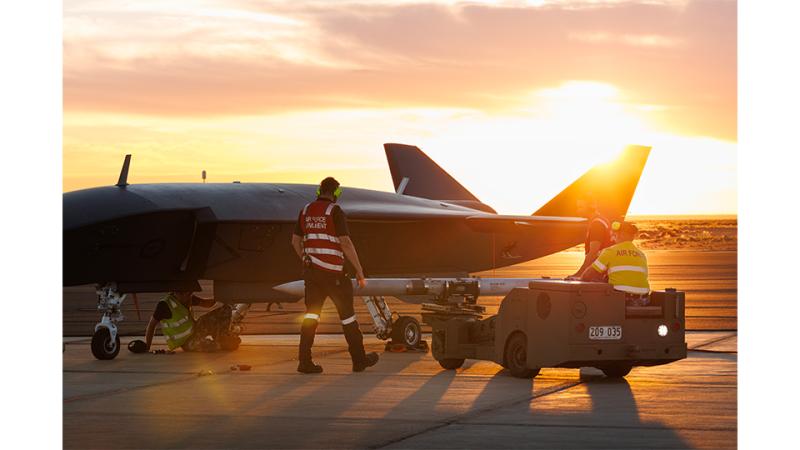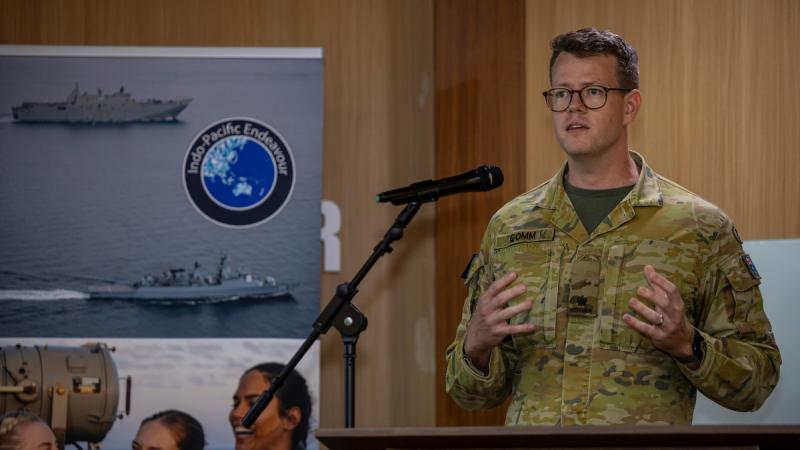21 November 2025
9 Squadron has seen significant changes since its formation in 1939, and now operates the Air Force’s newest remotely piloted aircraft system – the MQ-4C Triton.
Formed in January 1939 at RAAF Base Richmond, 9 Squadron originally operated amphibious aircraft from Royal Australian Navy heavy and light cruisers during World War 2.
In 1944, the squadron disbanded, closing this initial chapter of its history.
In June 1962, the squadron was reformed at RAAF Base Williamtown, later moving to RAAF Base Fairbairn and RAAF Base Amberley. This time the purpose was to provide search and rescue, then airlift for the Australian Army.
The squadron served in Vietnam, notably the Battle of Long Tan, and with the transfer of rotary wing aircraft to the Army, the squadron again disbanded in February 1989.
In June 2023, 9 Squadron was reformed at RAAF Base Edinburgh (with a detachment at RAAF Base Tindal) to operate the brand new capability of the Northrop Grumman MQ-4C Triton.
The MQ-4C Triton is a high-altitude remotely piloted aircraft system, which performs long-range, persistent and networked intelligence, surveillance and reconnaissance.
Introduction of the aircraft is a significant milestone for Air Force, and another very proud chapter in 9 Squadron history.
Commanding Officer 9 Squadron Wing Commander Lawry Benier highlighted the significant history of the squadron.
“9 Squadron has a long and proud history,” Wing Commander Benier said.
“It’s flown Walruses and Seagulls in World War 2 with the Navy, then Vietnam flying the mighty Huey (Bell UH-1 Iroquois).”
'It goes a long way, it sees a long way, it stays there a long time, and it tells everyone what it sees.'
Introduction of the MQ-4C Triton took significant work from across Defence and Defence industry.
“The Triton is quite different to most other capabilities in the Australian Defence Force,” Wing Commander Benier said.
“One of the key reasons is there are many pieces of the capability puzzle, both that fly and pieces that remain on the ground – these are all networked using our strategic communications infrastructure.”
Key milestones of its introduction included controlling the aircraft from Tindal and Edinburgh.
Controlling the aircraft from RAAF Base Tindal, its first flight, was a significant event as it demonstrated for the first time Air Force’s maturity to fly a large, highly integrated, uncrewed system.
“While it was a broad team effort across many parts of Defence to lay the foundations for this, getting the MQ-4C airborne is a choreographed team activity between 9 Squadron aircrew and our maintenance partner Northrop Grumman Australia,” Wing Commander Benier said.
“As CO [commanding officer], it was immensely satisfying to see our plans being applied, and rewarding to achieve what many had worked towards.”
Controlling Triton from the Mission Control Station at RAAF Base Edinburgh demonstrated that Defence’s integration efforts not only allowed control of the aircraft, but also its mission systems.
“This was really rewarding to observe 9 Squadron mission crews to apply their skills in working across operating sites, and applying the MQ-4C against its mission roles,” Wing Commander Benier said.
“Shortly after this event, 9 Squadron participated in Exercise Talisman Sabre 25, demonstrating some of what the MQ-4C can do to the integrated force.”
Being a large and complicated uncrewed aerial system (UAS), the MQ-4C Triton is a first of type for Defence’s airworthiness system.
While Defence has been thinking about the challenge of characterising risk and establishing safe UAS operations for many years, Triton’s operating permit and subsequent flying operations demonstrate not only confidence in the system, but also the ability to operate it.
The work that underpins this offers a repeatable template for other large UAS in future.
'We’ve got a great deal of learning to do, and in the not too distant future we will take it [the MQ-4C Triton] on operations.'
Having achieved these milestones, the MQ-4C Triton capability is able to provide long-range, persistent and networked surveillance for Australia’s denial strategy.
“It goes a long way, it sees a long way, it stays there a long time, and it tells everyone what it sees,” Wing Commander Benier said.
“It’s this collection of attributes that provides Defence with a reassuring eye in our region, and plenty of capacity to survey our maritime approaches and connections to the world.”
The introduction and sustainment of the new capability has been a truly integrated team effort, with Defence, Northrop Grumman and the US Navy the key stakeholders.
“Air Force is partnered with Northrop Grumman Australia for the delivery and sustainment of the Triton,” Wing Commander Benier said.
“This partnership has been fantastic and we will continue to work together over the years ahead.”
Asked what came next for 9 Squadron, Wing Commander Benier highlighted the ongoing capability realisation, including a lot of learning.
“The next things for 9 Squadron will be taking the Triton even further afield, putting it through all of its mission roles and enabling Defence to learn about its use,” he said.
“We’ve got a great deal of learning to do, and in the not too distant future we will take it on operations.”
The Australian Government has approved the acquisition of four MQ-4C Tritons, with the first three having already arrived, and the fourth anticipated in early 2028.
“It’s great that the albatross (9 Squadron badge) is once again airborne, flying the MQ-C4 Triton,” Wing Commander Benier said.
“The aviators of 9 Squadron will continue to see and not be seen.”


